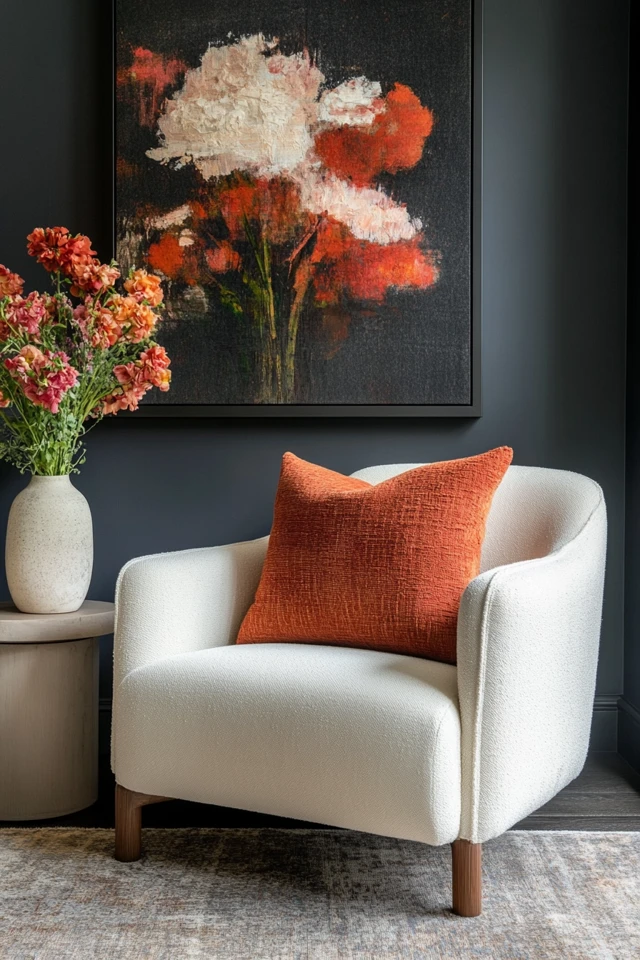Introduction
The interplay between bright and dark tones is what gives a space depth, character, and balance. Yet, achieving this harmony can be tricky. Too many dark tones can make a room feel heavy and closed-off, while too many bright tones might leave it feeling stark or overly sterile. The secret lies in finding the perfect balance—one where light and dark tones complement each other and work together to create a dynamic yet cohesive design.
I learned the importance of balance when redesigning my own dining room. Initially, I painted the walls a deep charcoal gray, hoping to create a moody, elegant atmosphere. While the color was stunning, it made the room feel smaller and overly intense. To offset this, I added a light wood dining table, white upholstered chairs, and a large mirror to reflect light. Suddenly, the space came alive, with the dark walls creating drama and the bright accents adding airiness. That experience taught me that it’s not about avoiding dark tones or bright tones—it’s about letting them work together.
This guide will walk you through the art of balancing bright and dark tones effortlessly. Whether you’re working with a small room or a large, open space, these tips will help you create a design that feels both grounded and uplifting.
The Perfect Design for You
Balancing bright and dark tones is ideal for anyone who wants to create a visually dynamic and balanced space. It’s particularly useful for rooms that feel too dark or too washed out, as the interplay between tones can bring a sense of harmony and intentionality to your design.
Imagine a living room with deep navy walls paired with a crisp white sofa, accented by light oak furniture and brass decor. Or picture a kitchen where black cabinets are offset by marble countertops and bright white backsplash tiles. These spaces feel inviting and cohesive because of the careful balance between light and dark elements.
Whether your style is modern, bohemian, or traditional, this approach ensures that your space feels well-rounded, dynamic, and full of personality.
Picture Gallery
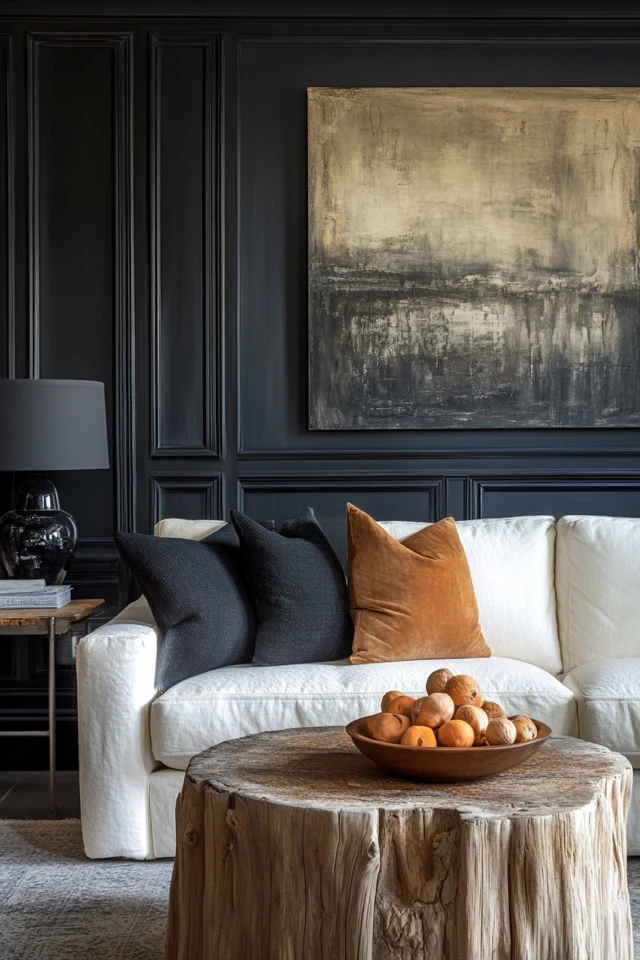
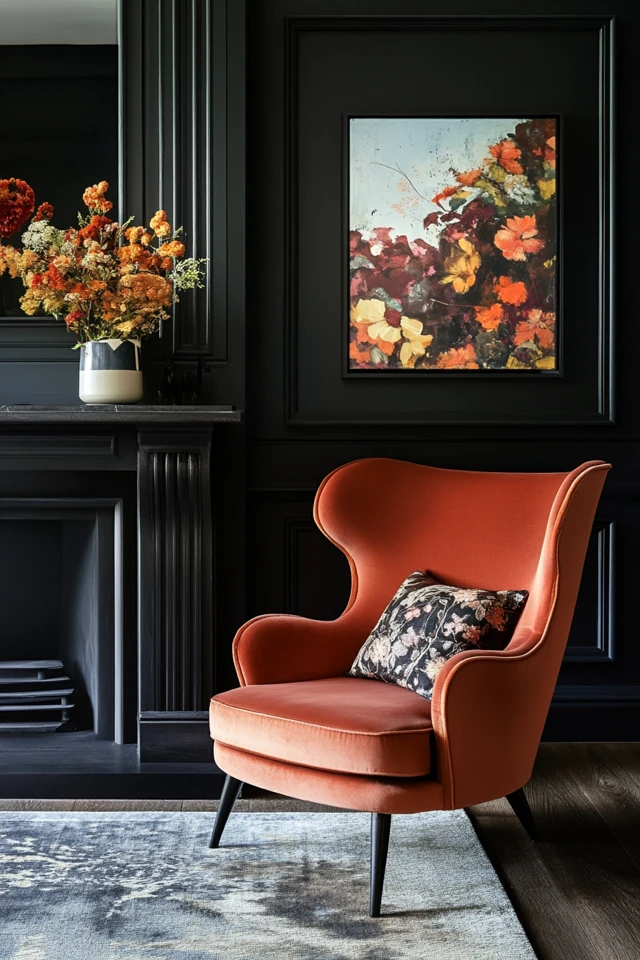
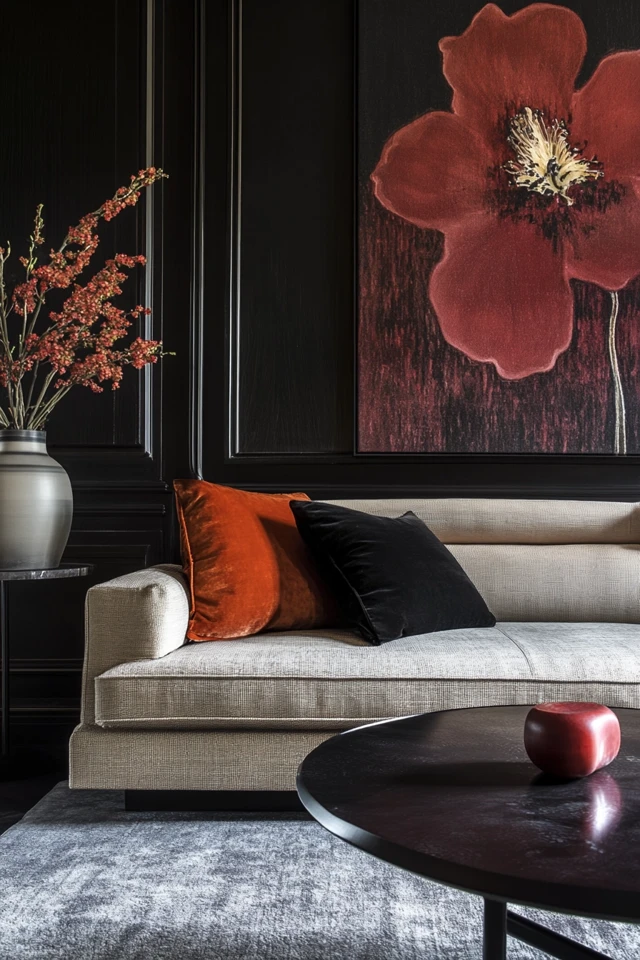
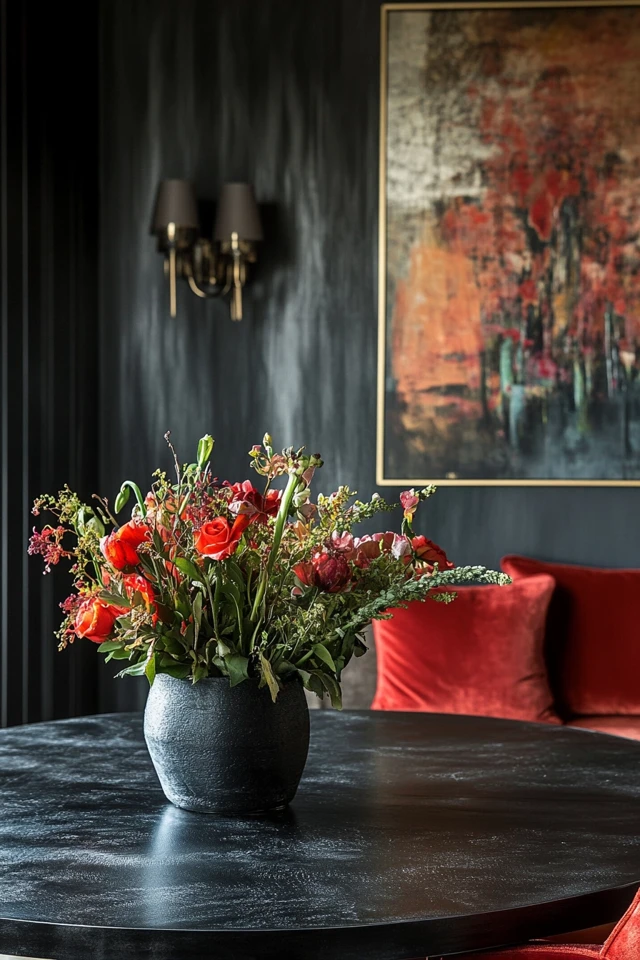
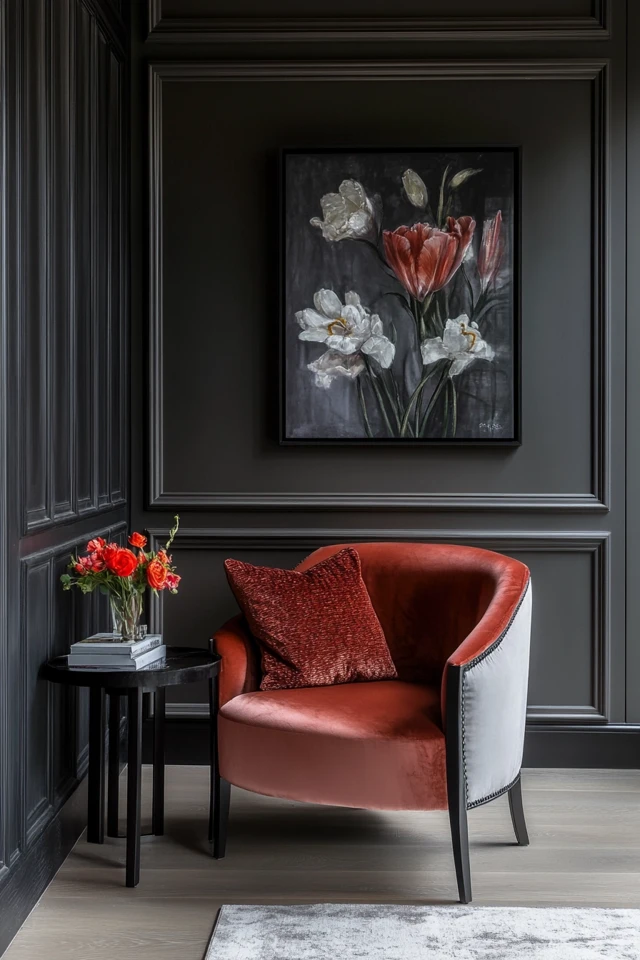
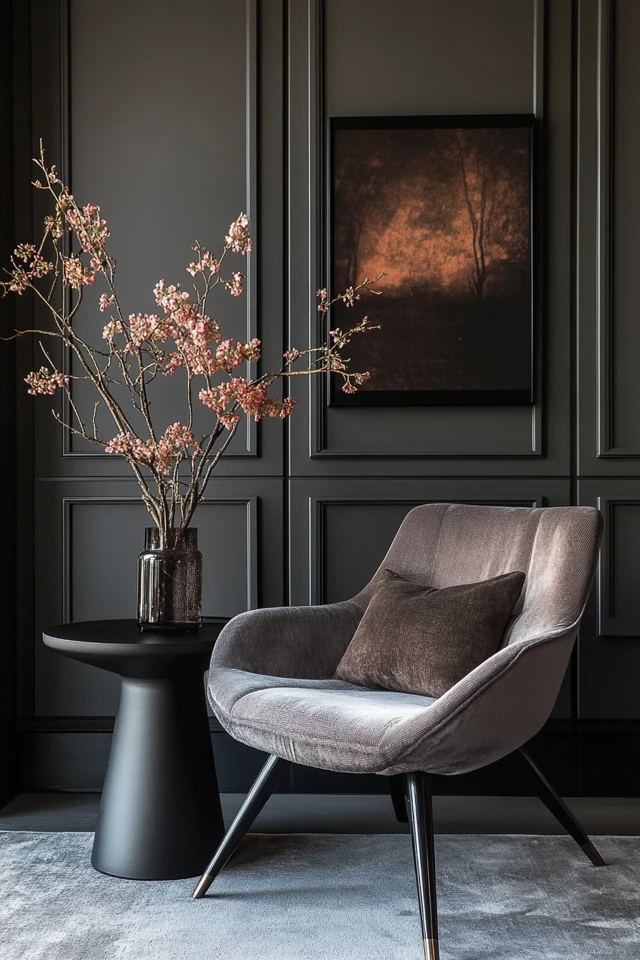
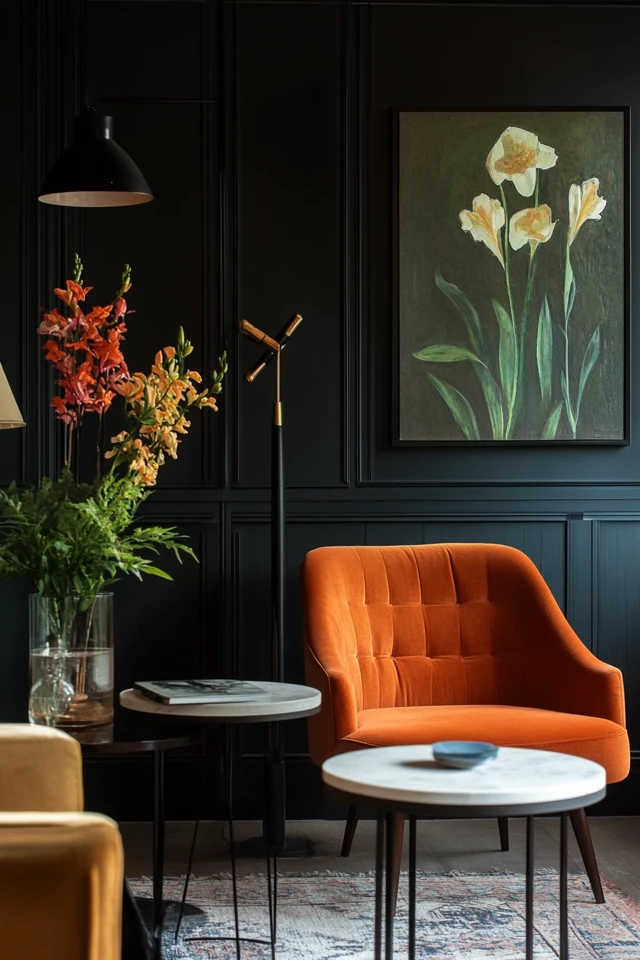

Why These Key Elements Work So Well Together
The combination of bright and dark tones works beautifully because it creates contrast, dimension, and balance. Here’s why these elements are so effective:
- Contrast for Drama: The juxtaposition of light and dark tones draws the eye and creates a sense of depth and interest.
- Grounding Effect: Dark tones anchor a space, making it feel grounded, while bright tones lift and open it up.
- Natural Flow: A mix of tones encourages the eye to move around the room, creating a dynamic and harmonious flow.
- Enhanced Light: Bright tones reflect light, while dark tones absorb it, working together to create a balanced atmosphere.
- Timeless Appeal: The interplay between bright and dark tones feels classic and enduring, transcending design trends.
Design theory supports the idea that contrast is key to a well-rounded aesthetic. By blending bright and dark tones, you create spaces that feel visually engaging without overwhelming the senses.
How to Balance Bright and Dark Tones Effortlessly: Step-by-Step
1. Start with a Base Color
- Choose a base color for the room that will guide your design. This can be either bright or dark:
- For a bright base: Use white, beige, or light gray on walls to create an open, airy feel.
- For a dark base: Opt for deep blues, greens, or charcoals for a dramatic and moody vibe.
2. Layer in Contrasting Tones
- Introduce contrasting tones to create balance:
- For bright walls, add dark furniture, such as a black coffee table or a navy sofa.
- For dark walls, incorporate bright decor like white curtains, light wood furniture, or neutral rugs.
3. Focus on Proportions
- Use the 70/30 rule to guide the balance of tones:
- Let one tone dominate 70% of the room (e.g., bright walls and floors).
- Use the other tone for the remaining 30% (e.g., dark furniture and decor).
4. Add Mid-Tones for Transition
- Use mid-tones to bridge the gap between light and dark elements:
- Incorporate warm woods, soft grays, or muted pastels in furniture or textiles.
- Example: Pair dark gray walls with a light oak dining table and beige chairs.
5. Use Textures to Soften Contrasts
- Layer different textures to create harmony between bright and dark tones:
- Add soft fabrics like velvet, linen, or wool in neutral or mid-tone colors.
- Use natural materials like rattan, wicker, or leather to add depth.
- Example: A dark leather sofa paired with light linen throw pillows creates balance through texture.
6. Incorporate Reflective Surfaces
- Bright tones reflect light and enhance the space:
- Add mirrors, glass decor, or metallic accents to amplify brightness.
- Place mirrors opposite dark walls to reflect light and prevent the space from feeling closed in.
7. Anchor with Dark Tones
- Use dark tones to ground the room and create a sense of stability:
- Anchor the space with a dark area rug, coffee table, or statement furniture piece.
- Example: In a bright room, a black accent chair or dark cabinetry adds a sense of weight and balance.
8. Incorporate Art and Decor
- Use wall art or decor to balance tones:
- Hang bright artwork on dark walls to add contrast and visual interest.
- Use dark frames or decor pieces against light walls for definition.
9. Consider Lighting
- Use lighting to highlight bright and dark tones:
- Add warm ambient lighting to soften dark tones.
- Use task lighting to spotlight bright areas, such as light-colored tabletops or shelves.
10. Test and Adjust
- Step back and assess your design:
- Does the room feel balanced and inviting?
- Adjust proportions or add transitional elements until the space feels cohesive.
FAQ
1. Can I use bright and dark tones in a small space?
Yes! Use bright tones as the dominant color to make the space feel open, and add dark accents to create depth and character.
2. How do I balance dark walls in a room?
Incorporate bright furniture, light-colored textiles, and reflective surfaces like mirrors or metallics to balance the heaviness of dark walls.
3. Should I use warm or cool tones when mixing bright and dark colors?
It depends on the mood you want to create. Warm tones (e.g., beige and brown) create a cozy, inviting feel, while cool tones (e.g., gray and blue) create a modern, serene vibe.
4. Can I use bright and dark tones with bold colors?
Absolutely! Pair bold colors with neutral bright and dark tones to keep the design grounded. For example, pair a bold red sofa with light beige walls and a black coffee table.
5. What if my room has too many bright tones?
Add depth with dark accents, such as a navy area rug, black picture frames, or dark wood furniture. This will ground the space and prevent it from feeling overly stark.
Variations
- Modern Minimalism: Use white walls and floors with black furniture and decor for a sleek, monochromatic look.
- Rustic Charm: Pair dark wood beams with bright white walls and soft, neutral textiles for a cozy, farmhouse vibe.
- Bohemian Flair: Combine bright walls with dark, textured furniture and colorful mid-tone accents like woven rugs or patterned throws.
- Industrial Edge: Use dark metals and concrete finishes balanced by bright wood and light textiles for a modern, urban aesthetic.
- Classic Elegance: Incorporate dark navy or emerald walls with bright white wainscoting and gilded accents for a timeless design.
How to Showcase It
- Living Rooms: Combine a dark sofa or rug with bright walls and light-colored throw pillows to create a balanced, inviting space.
- Bedrooms: Use dark bedding or curtains to add depth, paired with bright furniture or walls for contrast.
- Kitchens: Pair dark cabinetry with white countertops and backsplashes for a clean, modern look.
- Bathrooms: Use dark tiles or vanities offset by bright walls and mirrors to create a spa-like feel.
- Dining Rooms: Balance a dark wood table with bright upholstered chairs and metallic lighting fixtures for a sophisticated touch.
Occasions to Feature It
- Housewarming Parties: Impress guests with a balanced, stylish space that feels dynamic and inviting.
- Seasonal Decor: Add dark accents during cooler months for warmth, or brighten the space with light decor in spring and summer.
- Entertaining: Use a mix of bright and dark table settings for a striking and elegant dining experience.
- Photo Opportunities: The contrast between bright and dark tones creates a stunning backdrop for photos and gatherings.
- Daily Living: Enjoy a harmonious and well-balanced space that feels comfortable and timeless.
Conclusion
Balancing bright and dark tones is about creating harmony, depth, and visual interest in your space. By combining these elements thoughtfully, you can design rooms that feel both grounded and uplifting, dramatic yet welcoming.
Whether you’re anchoring a bright room with dark accents or adding lightness to a moody palette, the key is proportion, contrast, and intentional layering. With these tips, you’ll master the art of tonal balance, creating a home that’s as stylish as it is comfortable.
So go ahead—play with light and dark, experiment with textures and proportions, and let your space come alive with depth and dimension. The perfect balance is waiting to be discovered.

